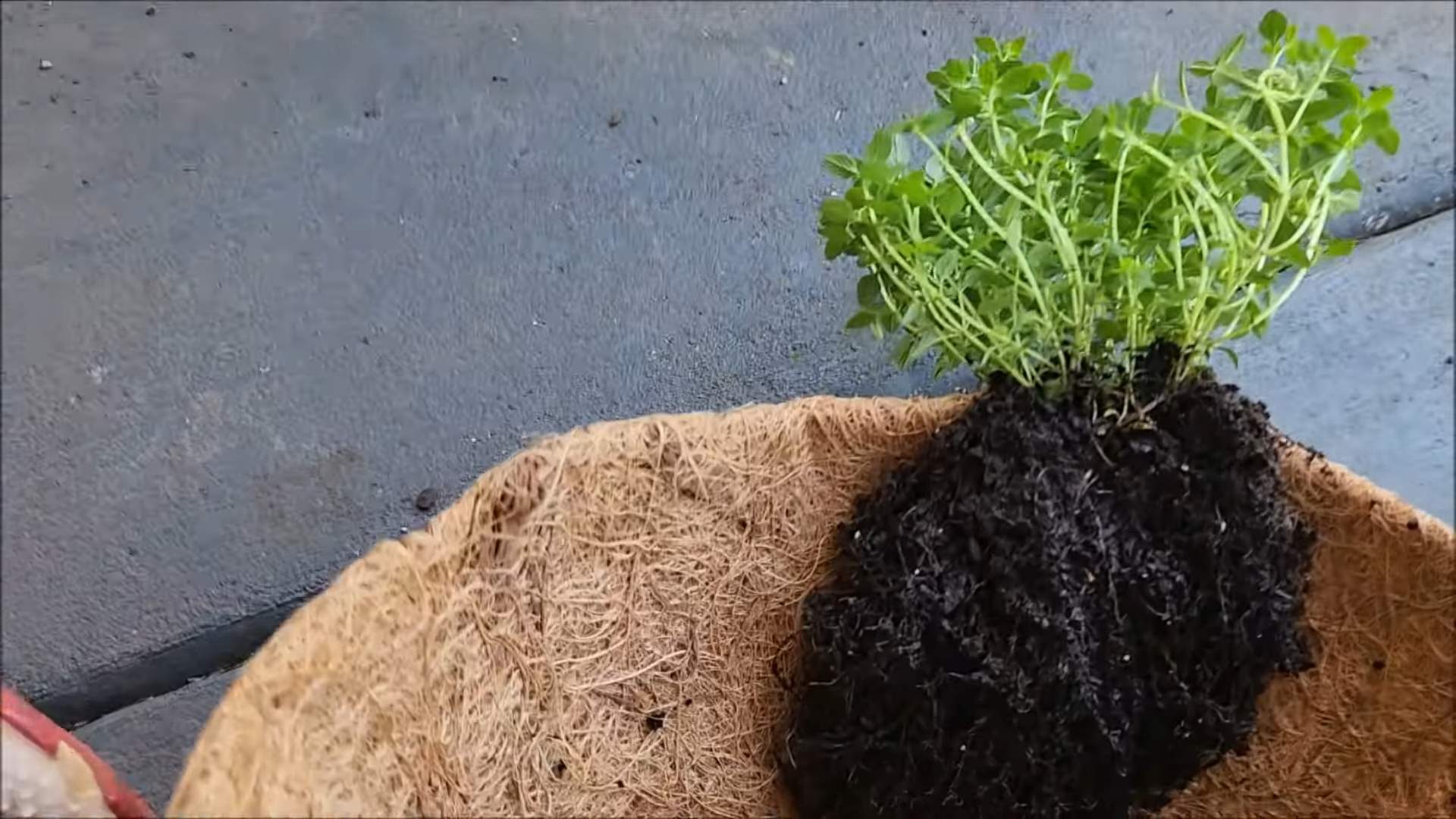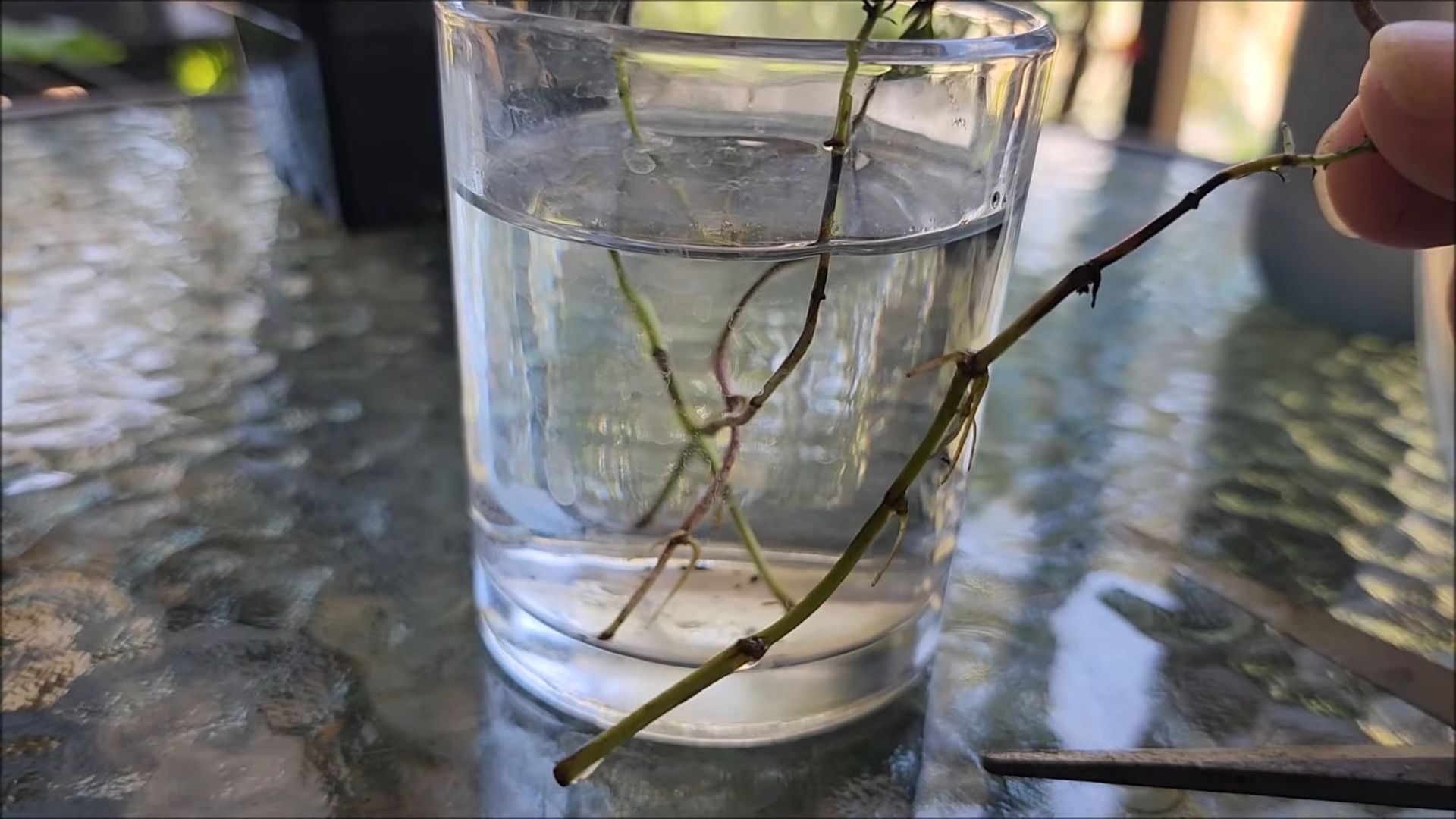Growing Thyme Indoors can seem like a daunting task, especially if you’re new to the world of indoor gardening. But trust me, with a few simple tricks and a little bit of know-how, you can have a thriving thyme plant right on your windowsill! For centuries, thyme has been cherished not only for its culinary uses, adding a delightful earthy flavor to countless dishes, but also for its medicinal properties and aromatic fragrance. From ancient Egyptians using it in embalming rituals to Romans believing it symbolized courage, thyme boasts a rich and fascinating history.
But why bother growing thyme indoors? Well, imagine having fresh, flavorful thyme readily available whenever you need it, regardless of the season. No more last-minute trips to the grocery store or settling for dried herbs that lack that vibrant taste. Plus, growing your own herbs is incredibly rewarding and a fantastic way to connect with nature, even within the confines of your home. In this article, I’m going to share some easy-to-follow DIY tricks and hacks that will help you successfully cultivate your own indoor thyme garden. Get ready to enjoy the delightful aroma and culinary benefits of fresh thyme, all year round!

Grow Radishes at Home: A Beginner’s Guide
Hey there, fellow gardening enthusiasts! I’m so excited to share my experience with growing radishes at home. They’re one of the easiest and fastest vegetables to cultivate, perfect for beginners and seasoned gardeners alike. Plus, that peppery bite is just irresistible! Let’s dive in and get your radish patch started.
Choosing Your Radish Variety
Before we get our hands dirty, let’s talk about radish varieties. There’s a whole world beyond the classic red globe!
* **Cherry Belle:** This is your classic, round, bright red radish. It’s quick to mature and has a mild flavor.
* **French Breakfast:** These are elongated, red radishes with a white tip. They have a slightly milder flavor than Cherry Belle.
* **Easter Egg:** A mix of red, pink, purple, and white radishes. A fun option for adding color to your garden and salads!
* **Black Spanish:** A larger, round radish with black skin and white flesh. It has a stronger, more pungent flavor and takes longer to mature.
* **Daikon:** A long, white radish commonly used in Asian cuisine. It’s milder than other varieties and can grow quite large.
I personally love growing Cherry Belle and French Breakfast because they’re quick and easy. But feel free to experiment and find your favorites!
Preparing Your Radish Bed
Radishes are pretty low-maintenance, but they do appreciate a well-prepared bed.
* **Sunlight:** Radishes need at least 6 hours of sunlight per day.
* **Soil:** They prefer loose, well-drained soil. Compacted soil can lead to misshapen radishes.
* **pH:** The ideal soil pH for radishes is between 6.0 and 7.0.
Improving Your Soil
If your soil is heavy clay or sandy, you’ll want to amend it before planting.
* **Clay Soil:** Add plenty of compost or well-rotted manure to improve drainage and aeration.
* **Sandy Soil:** Add compost or peat moss to help retain moisture.
I always add a generous amount of compost to my radish bed. It really makes a difference in the size and quality of the radishes.
Planting Your Radish Seeds
Now for the fun part! Planting those tiny seeds and watching them sprout.
* **Timing:** Radishes are a cool-season crop, so plant them in early spring or late summer/early fall. Avoid planting during the hottest part of the summer, as they can bolt (go to seed) quickly.
* **Direct Sowing:** Radishes are best direct-sown, meaning you plant the seeds directly into the ground. They don’t transplant well.
* **Spacing:** Sow seeds about 1/2 inch deep and 1 inch apart in rows that are 6 inches apart.
* **Watering:** Water gently after planting to keep the soil moist.
Succession Planting
To enjoy a continuous harvest of radishes, practice succession planting. Sow a new batch of seeds every 1-2 weeks. This way, you’ll have fresh radishes coming up all season long.
Caring for Your Radishes
Radishes are relatively easy to care for, but here are a few tips to keep them happy and healthy.
* **Watering:** Keep the soil consistently moist, but not waterlogged. Radishes need regular watering to prevent them from becoming tough and bitter.
* **Weeding:** Keep the radish bed free of weeds, which can compete for nutrients and water.
* **Thinning:** Once the seedlings emerge, thin them to about 2 inches apart. This will give the radishes enough room to grow.
* **Fertilizing:** Radishes don’t need a lot of fertilizer. A light feeding of compost tea or a balanced organic fertilizer can be beneficial.
Dealing with Pests and Diseases
Radishes are generally pest-resistant, but here are a few common problems to watch out for:
* **Flea Beetles:** These tiny beetles can chew small holes in the leaves. Cover your plants with row covers to prevent flea beetle damage.
* **Root Maggots:** These larvae can tunnel into the roots, causing them to rot. Rotate your crops and avoid planting radishes in the same spot year after year.
* **Clubroot:** This fungal disease causes swollen, distorted roots. Improve soil drainage and avoid planting radishes in infected soil.
I’ve found that keeping my garden clean and healthy is the best way to prevent pests and diseases.
Harvesting Your Radishes
The best part of growing radishes is the quick harvest!
* **Timing:** Radishes are typically ready to harvest in 3-4 weeks, depending on the variety.
* **Signs of Maturity:** Look for radishes that are about 1 inch in diameter. You can also gently pull one up to check its size.
* **Harvesting Technique:** Gently pull the radishes from the soil. If the soil is dry, water it beforehand to make harvesting easier.
* **Storage:** Store radishes in the refrigerator for up to a week. Remove the greens before storing, as they can draw moisture from the roots.
Enjoying Your Radishes
Radishes are delicious raw, cooked, or pickled.
* **Raw:** Slice them thinly and add them to salads, sandwiches, or tacos.
* **Cooked:** Roast them with other vegetables, add them to soups, or sauté them with butter and herbs.
* **Pickled:** Pickled radishes are a tangy and refreshing treat.
I love adding radishes to my salads for a peppery kick. I also enjoy roasting them with carrots and potatoes.
Step-by-Step Instructions: Growing Radishes
Okay, let’s break down the whole process into easy-to-follow steps:
1. **Choose Your Variety:** Decide which radish variety you want to grow based on your taste and growing conditions.
2. **Prepare Your Bed:** Select a sunny spot with well-drained soil. Amend the soil with compost or well-rotted manure.
3. **Sow Your Seeds:** Plant seeds 1/2 inch deep and 1 inch apart in rows that are 6 inches apart.
4. **Water Gently:** Water the soil gently after planting to keep it moist.
5. **Thin Seedlings:** Once the seedlings emerge, thin them to about 2 inches apart.
6. **Water Regularly:** Keep the soil consistently moist, but not waterlogged.
7. **Weed Regularly:** Keep the radish bed free of weeds.
8. **Fertilize Lightly (Optional):** Feed with compost tea or a balanced organic fertilizer if desired.
9. **Monitor for Pests and Diseases:** Check your plants regularly for signs of pests or diseases.
10. **Harvest When Ready:** Harvest radishes when they are about 1 inch in diameter.
11. **Enjoy Your Harvest:** Eat your radishes raw, cooked, or pickled!
Troubleshooting Common Radish Problems
Even with the best planning, sometimes things don’t go exactly as expected. Here are some common radish growing problems and how to fix them:
* **Radishes are small and stunted:** This could be due to overcrowding, poor soil, or lack of water. Thin your seedlings, amend the soil with compost, and water regularly.
* **Radishes are tough and bitter:** This is often caused by inconsistent watering or hot weather. Keep the soil consistently moist and avoid planting during the hottest part of the summer.
* **Radishes are bolting (going to seed):** This is usually caused by hot weather or stress. Plant radishes in early spring or late summer/early fall, and provide consistent watering.
* **Radishes are split or cracked:** This can be caused by uneven watering. Water regularly and consistently.
* **Leaves are eaten by pests:** Identify the pest and take appropriate action. Row covers can help prevent flea beetle damage.
Advanced Tips for Radish Growing
Want to take your radish growing to the next level? Here are a few advanced tips:
* **Companion Planting:** Plant radishes with carrots. The radishes help deter carrot root flies, and the carrots help deter flea beetles.
* **Green Manure:** Use radishes as a green manure crop. They can help improve soil structure and suppress weeds.
* **Saving Seeds:** Save seeds from your favorite radish varieties to plant next year. Allow the radishes to bolt and produce seed pods. Once the pods are dry, harvest the seeds and store them in a cool, dry place.
* **Growing Radish Greens:** Don’t throw away the radish greens! They are edible and nutritious. Add them to salads, soups, or stir-fries.
My Personal Radish Growing Journey
I remember the first time I tried growing radishes. I was so excited to see those little sprouts pop up in just a few days. I was amazed at how quickly they grew! I made a few mistakes along the way, like not thinning them enough and letting them get too dry. But I learned from my mistakes and now

Conclusion
So, there you have it! Mastering the art of growing thyme indoors is not only achievable but also incredibly rewarding. Imagine having fresh, fragrant thyme readily available at your fingertips, ready to elevate your culinary creations at a moment’s notice. No more last-minute trips to the grocery store or settling for dried herbs that lack the vibrant flavor of the fresh stuff. This DIY trick is a game-changer for any home cook, herb enthusiast, or anyone simply looking to add a touch of green to their indoor space.
Why is this a must-try? Because it’s simple, cost-effective, and yields delicious results. You don’t need a green thumb or extensive gardening experience to succeed. With a few basic supplies and a little bit of patience, you can cultivate your own thriving thyme plant indoors. Think of the possibilities! Sprinkle fresh thyme leaves over roasted vegetables, infuse olive oil with its aromatic essence, or add it to your favorite soups and stews. The flavor boost is undeniable.
But the benefits extend beyond the culinary realm. Thyme is also known for its medicinal properties, boasting antiseptic and antioxidant qualities. Having a thyme plant indoors means you have a natural remedy readily available. Brew a soothing thyme tea to ease a cough or sore throat, or simply enjoy the calming aroma that fills the air.
Ready to take your indoor thyme cultivation to the next level? Consider these variations:
* Experiment with different varieties: Explore the diverse world of thyme! From common thyme to lemon thyme, creeping thyme, and woolly thyme, each variety offers a unique flavor profile and appearance. Try growing a few different types to create a diverse herb garden.
* Hydroponic Thyme: For a more modern approach, consider growing thyme hydroponically. This soil-less method can be incredibly efficient and allows you to control the growing environment precisely.
* Thyme in Terrariums: Create a miniature ecosystem by incorporating thyme into a terrarium. Its low-growing habit and drought tolerance make it an ideal choice for these enclosed environments.
* Vertical Gardening: Maximize your space by growing thyme in a vertical garden. This is a great option for small apartments or homes with limited outdoor space.
We’re confident that you’ll find growing thyme indoors to be a fulfilling and enjoyable experience. Don’t be afraid to experiment, learn from your mistakes, and adapt the techniques to suit your specific environment and preferences. The most important thing is to get started!
So, what are you waiting for? Grab a pot, some soil, and a thyme seedling, and embark on your indoor herb-growing journey today. We encourage you to try this DIY trick and share your experiences with us. Let us know what works best for you, what challenges you encounter, and any tips or tricks you discover along the way. Share your photos and stories on social media using #IndoorThyme and let’s create a community of thriving indoor herb gardeners! We can’t wait to see your flourishing thyme plants!
FAQ
What kind of soil is best for growing thyme indoors?
Thyme thrives in well-draining soil. A mixture of potting soil, perlite, and sand is ideal. This combination ensures good drainage, preventing root rot, which thyme is susceptible to. Avoid heavy, clay-based soils that retain too much moisture. You can also use a cactus or succulent potting mix, as these are typically well-draining.
How much sunlight does indoor thyme need?
Thyme needs at least 6-8 hours of direct sunlight per day to thrive. Place your thyme plant near a sunny south-facing window. If you don’t have enough natural light, supplement with a grow light. LED grow lights are energy-efficient and provide the full spectrum of light that thyme needs for healthy growth. Rotate the plant regularly to ensure even light exposure on all sides.
How often should I water my indoor thyme plant?
Water thyme sparingly, allowing the soil to dry out completely between waterings. Overwatering is a common mistake that can lead to root rot. Check the soil moisture by sticking your finger about an inch deep into the soil. If it feels dry, it’s time to water. When you do water, water thoroughly until water drains out of the bottom of the pot. Then, discard any excess water that accumulates in the saucer to prevent the plant from sitting in water.
How do I prune my indoor thyme plant?
Pruning is essential for maintaining a healthy and productive thyme plant. Prune regularly to encourage bushier growth and prevent the plant from becoming leggy. Use clean, sharp scissors or pruning shears to trim the stems. You can prune thyme throughout the growing season, but avoid pruning too heavily at once. Aim to remove about one-third of the plant’s growth at a time. You can use the pruned thyme leaves for cooking or drying.
What are some common problems when growing thyme indoors, and how can I fix them?
Some common problems include:
* Root rot: Caused by overwatering. Ensure well-draining soil and allow the soil to dry out between waterings.
* Leggy growth: Caused by insufficient light. Provide more sunlight or supplement with a grow light. Prune regularly to encourage bushier growth.
* Pests: Thyme can be susceptible to pests like aphids and spider mites. Inspect your plant regularly and treat any infestations promptly with insecticidal soap or neem oil.
* Yellowing leaves: Can be caused by overwatering, underwatering, or nutrient deficiencies. Adjust your watering schedule and fertilize with a balanced liquid fertilizer diluted to half strength.
Can I grow thyme from seed indoors?
Yes, you can grow thyme from seed indoors, but it can be a bit more challenging than starting with a seedling or cutting. Thyme seeds are very small and require light to germinate. Sow the seeds on the surface of the soil and gently press them down. Keep the soil moist but not soggy. Germination can take several weeks. Once the seedlings are large enough to handle, transplant them into individual pots.
How do I fertilize my indoor thyme plant?
Thyme doesn’t require heavy fertilization. Fertilize sparingly with a balanced liquid fertilizer diluted to half strength every 2-3 months during the growing season (spring and summer). Avoid over-fertilizing, as this can lead to leggy growth and a less intense flavor.
Can I move my indoor thyme plant outdoors in the summer?
Yes, you can move your indoor thyme plant outdoors in the summer, but be sure to acclimate it gradually to the outdoor conditions. Start by placing it in a shady spot for a few hours each day, gradually increasing the amount of sunlight it receives. Protect it from strong winds and heavy rain. Bring it back indoors before the first frost.
How long will my indoor thyme plant live?
With proper care, your indoor thyme plant can live for several years. Regular pruning, adequate sunlight, and well-draining soil are essential for its longevity. Repot the plant every year or two to refresh the soil and provide more space for the roots to grow.




Leave a Comment